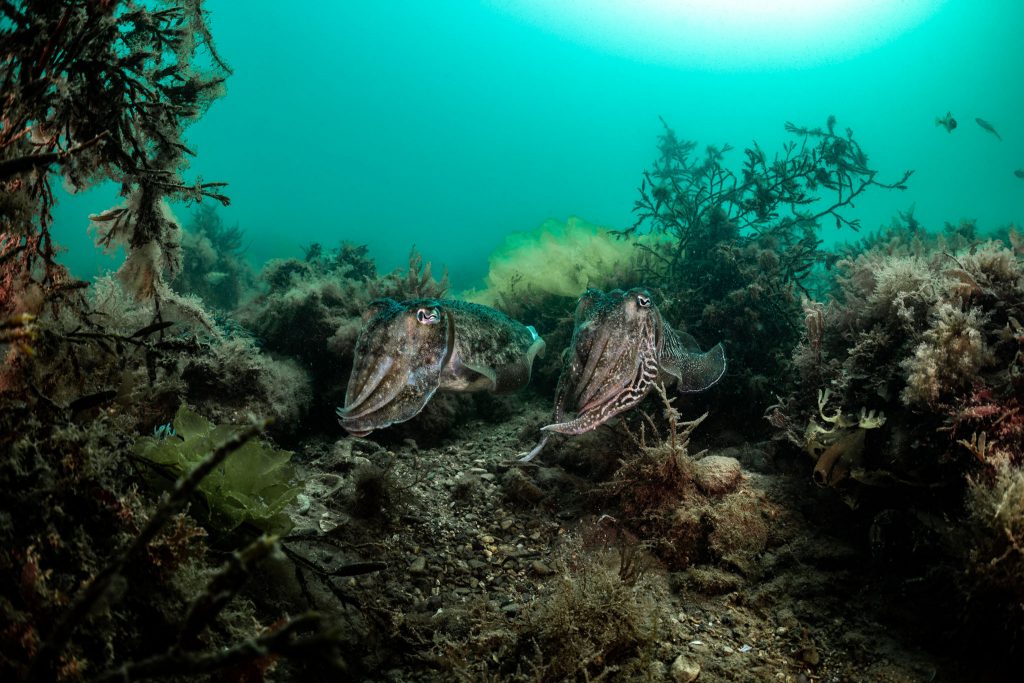Small-scale inshore fisheries are an important part of Britain’s coastal economies — and its heritage. When they are well managed, they provide a source of seafood that is both local and sustainable.
More than 75 per cent of the UK fishing fleet is made up of boats under 10 metres. It’s a fleet that mostly targets non-quota species such as whelk, crab, lobster and cuttlefish. The static pots favoured by these vessels have a much lower impact than larger trawl and dredge fisheries.
Yet the future of these low-impact fisheries is under threat. There is a lack of data about many of the non-quota stocks, and little or no management of the larger offshore fleet that lands the majority of the catch. This leads to over-fishing, and there is increasing concern about declining stocks, overcrowding and gear conflict, where equipment from different boats clashes at sea.
Cuttlefish forms an important part of the mixed inshore fishery, particularly along the south coast of England, where several ports are dependent on it. The fish have a short two-year life cycle but are often caught before they spawn, which can have a significant impact on populations.
The UK whelk fishery has expanded in recent years due to growth in foreign markets and increased prices, but the limited regulation of the fishery and understanding of stock status make populations vulnerable to overfishing.
Crab is the third most valuable fishery in the UK, and pots are used to catch brown crab and lobster along almost the entire length of the coastline. But a sizeable offshore fishery targets the animals at depths up to 200m, and landings have increased significantly in the past 30 years. Stock assessments indicate most of the main crab fisheries for are either fully or over-exploited, which has raised concerns about the sustainability of the fishery and the impact that a collapse would have.
To safeguard stocks and livelihoods, Blue Marine has launched an initiative called Safeguarding At-Risk Fisheries, promoting sustainable and equitable management of the key fisheries. At a series of online symposiums in 2022 and 2023, Blue Marine brought together more than 400 stakeholders, representing fishers, fisheries management, environmental and scientific interests to share research and information, and discuss management options.
The results of the events fed into the first ‘Frontrunner’ Fisheries Management Plans for Crab & Lobster, Whelk, and Cuttlefish. We continue to influence the sustainable management of these fisheries, and the communities that depend on them.
To better understand the challenges, in autumn 2024 Blue Marine co-hosted two national 3-day residential workshops in Poole and Whitby. These attracted 120 participants, 55 of whom were active commercial fishermen to discuss the drivers of decline, and strategies for sustaining small-scale fishing communities. Widely welcomed, the workshops identified priorities for change, which we will take forward with partners in 2025.
Many small-scale fishermen target whelk, crab, lobster, scallops and cuttlefish. Blue Marine has actively influenced the development of the Fisheries Management Plans for these species, calling for the effort of larger offshore fleets to be managed, and better engagement with small-scale fishers. We will continue to press for the introduction of fisheries management plans that make a difference in the water, rather than just in the meeting room.

Caption: Common cuttlefish during spawning season. Photo credit: Henley Spiers.
The following videos by Blue Marine and Rosie Ashley-East shine a light on these amazing animals and the need for better management to safeguard cuttlefish and sustainable fisheries.